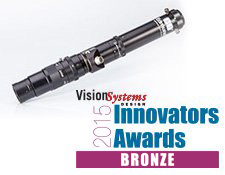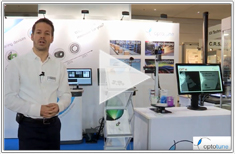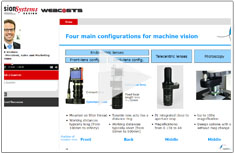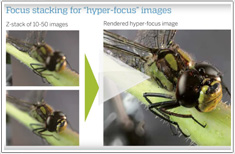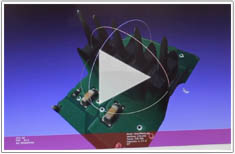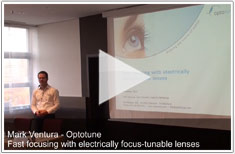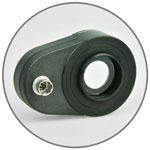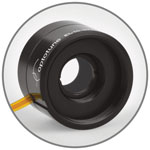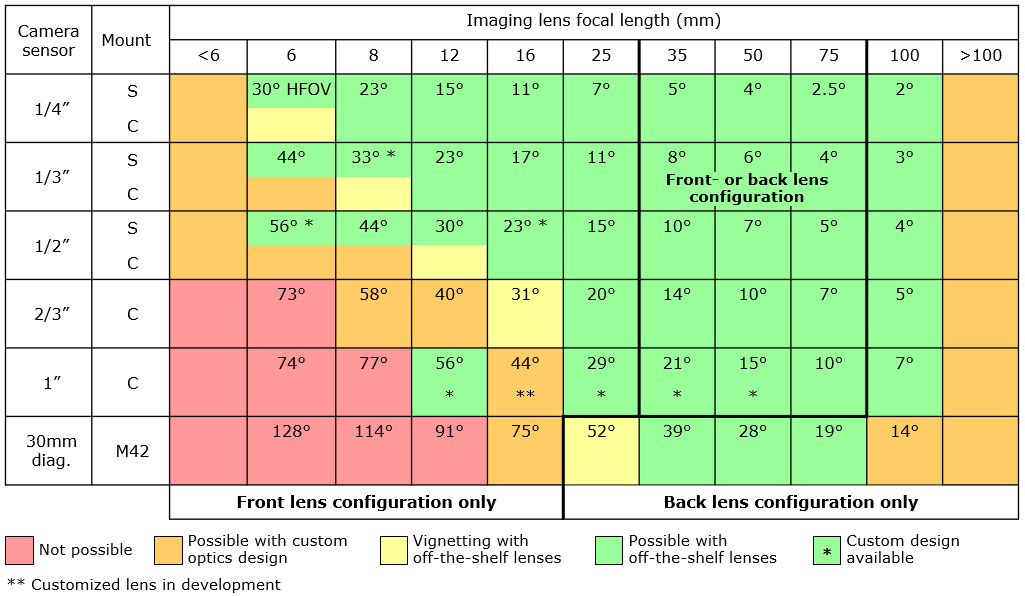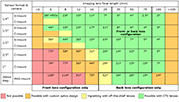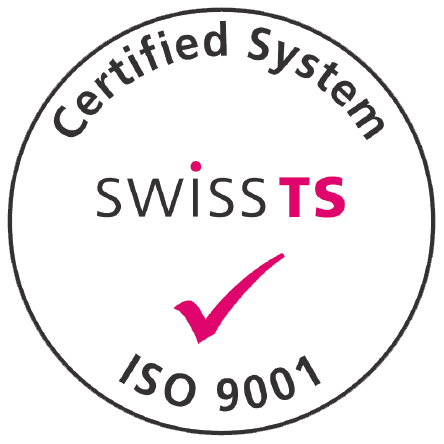|
|
You would like to inspect your product at different working distances? Or read 2D codes quickly no matter how far away they are? Focus tunable lenses provide a versatile and compact solution with focusing times of only a few milliseconds. As no translational mechanics are involved such systems are robust and achieve billions of cycles. Optotune’s lenses can be combined with off-theshelf imaging lenses by mounting them either in front or at the back. A few example configurations follow, many more can be found in our application notes. Applications:
|
|
Front-lens configuration provides large WD changes Vision systems of 8mm to 50mm focal length can be equipped with a tunable lens in the front, typically mounted on the filter thread. In this configuration it is possible to focus from infinity (tunable lens at 0 diopters) down to about 100mm (tunable lens at 10 diopters) or less if spacers are added. Especially compact systems can be realized in combination with M12 board lenses, whereas the tunable lens can be mounted directly on the C-mount camera as shown on the left.
Back lens configuration is ideal for large image sensors By placing the focus tunable lens at the back of an endocentric imaging lens it is possible to achieve image circles of up to 30mm. Placing the lens between camera and C-mount lens acts like adding a spacer. This makes sense for lenses with focal lengths of 35mm or more and offers very nice macro possibilities. With M42 mount cameras there is usually enough space to place the tunable lens at the back, such that working distances up to infinity are possible as well. While this configuration usually provides less optical leverage (smaller WD ranges) than the front lens configuration it can offer better resolution and reproducibility of the focus plane. The following examples show an Optotune EL-16-40-TC-VIS-5D-M42 placed behind a Zeiss Distagon 25mm M42-mount lens providing a 30mm image circle and an EL-10-30-Ci-VIS-LD-MV placed between a 50mm lens and C-mount camera.
Telecentric lenses
The configuration shown on the right includes a SILL Correctal 2.0 telecentric lens, which was optimized to integrate Optotune's EL-16-40-TC-VIS-5D-M30, providing an image circle of 30mm. Read the full test report. |
||||
|
High magnification
For life science applications, please have a look at our section on microscopy. |
Videos
|
Optotune at VISION Stuttgart 2018 |
Webinar on liquid lenses for machine vision |
|
Focus stacking in real time |
Focus stacking with Sanxo Scope |
|
How to keep continuous focus when working distance changes? |
Presentation on Machine Vision at Stemmer Forum in Munich |
|
EL-10-30-Ci on a Dalsa BOA 640 Smart camera operated by Sherlock software |
Continuous focus with the EL-10-30 and a time-of-flight distance sensor |
|
Related products |
||||
|
|
||||
|
EL-16-40-TC |
EL-10-30-Ci |
EL-10-30-C |
|
|
Machine vision configuration table (for Optotune's EL-16-40-TC lens) |


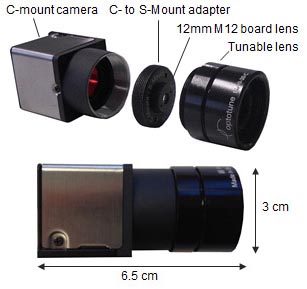
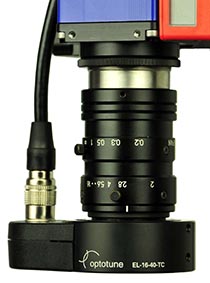
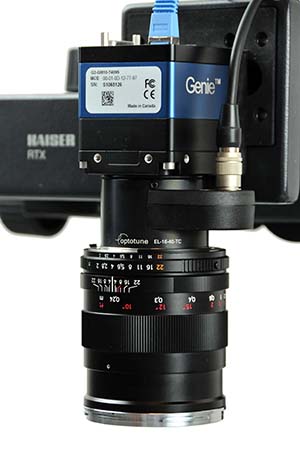

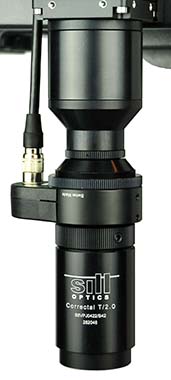 Great results are also achieved in combination with telecentric lenses. However, not many off-the-shelf configurations are available as the tunable lens is preferrably placed right after the aperture stop. If that is the case examples for achievable z-ranges are 20mm at 1x and 10mm at 2x magnification. Detailed reports can be found
Great results are also achieved in combination with telecentric lenses. However, not many off-the-shelf configurations are available as the tunable lens is preferrably placed right after the aperture stop. If that is the case examples for achievable z-ranges are 20mm at 1x and 10mm at 2x magnification. Detailed reports can be found 